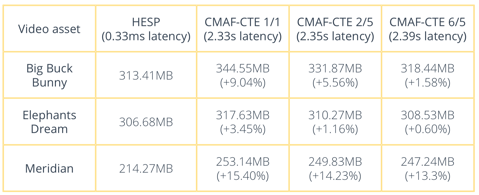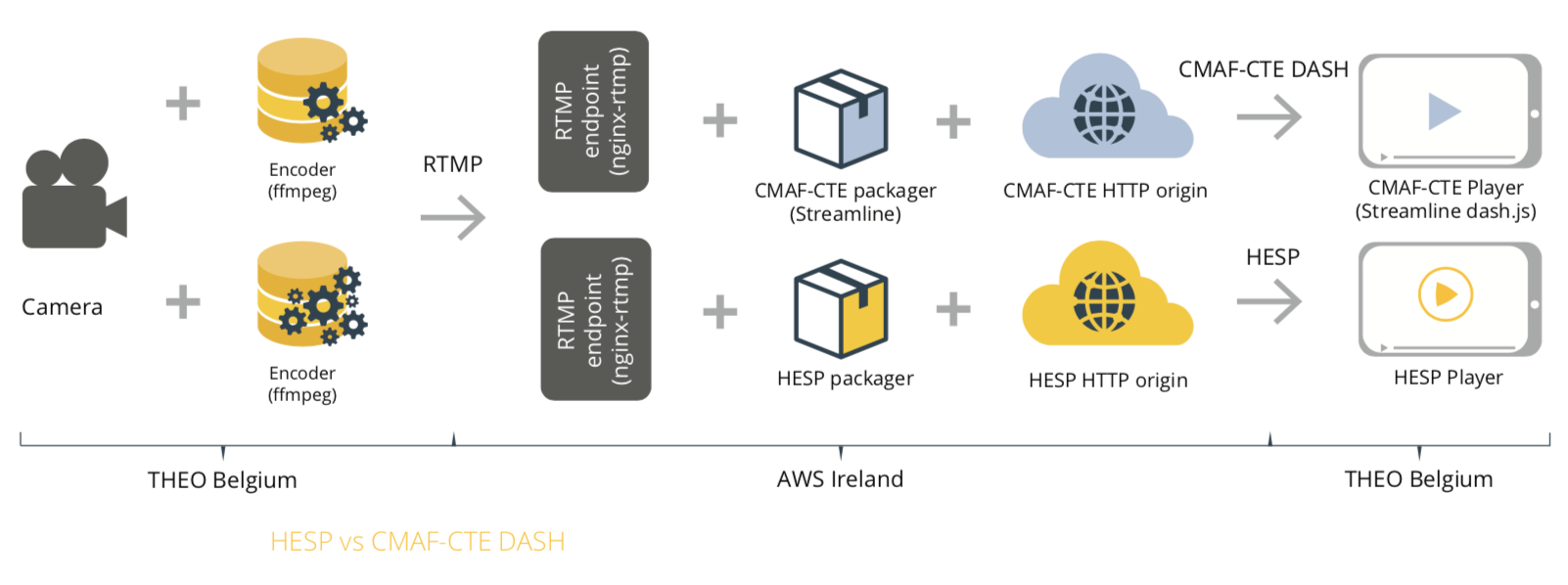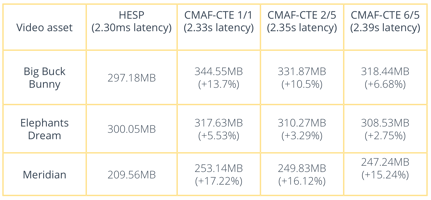We compared the streaming bandwidth between the HESP and CMAF-CTE streams from the test setup. Bandwidths were measured when delivered to the client by measuring the total amount of data transfered over a period of 10 minutes for a live channel distributing a few different types of content. All assets were encoded in the same way, the only variance being GOP sizes.
Comparing bandwidth usage with optimal latency
The test assets which were looped within the live channels were three videos from the Xiph collection:
-
Big Buck Bunny: The slow moving movie we all love.
-
Elephants Dream: Relatively fast moving movie asset.
-
Meridian: The Netflix test asset designed to test encoders.
When comparing bandwidth used after 10 minutes, we found the following results. The average latencies were the same as in the previous test.

Based on these results, we can see that the HESP protocol, with its optimized container format is able to achieve ultra-low latency without compromising on bandwidth. In fact, HESP achieves a lower latency then CMAF-CTE while at the same time achieving a lower bandwidth utilization.

Comparing bandwidth usage at the same latency
In most use-cases, achieving ultra low latency is not a requirement. For example, most TV services and formats do not require their latency to be lower then the current broadcast service latency which is around 4 to 5 seconds. In order to measure gains achieved by trading latency for bandwidth, we designed a test setup where the encoding parameters were modified to achieve a 2.3s end to end latency for HESP aligned with the lowest latency measured for DASH CMAF-CTE. The remainder of the setup was kept the same as the previous setup.

The results measured were:

When comparing these results with the results from the previous test, we can see the additional time spent in compressing the video allows to increase the bandwidth savings. The percentage in bandwidth saved, can of course map one-to-one with cost reduction for example the CDN egress. Depending on the content being broadcasted (ideal GOP-length), the bandwidth saving can become quite significant, averaging between 10-15%.

